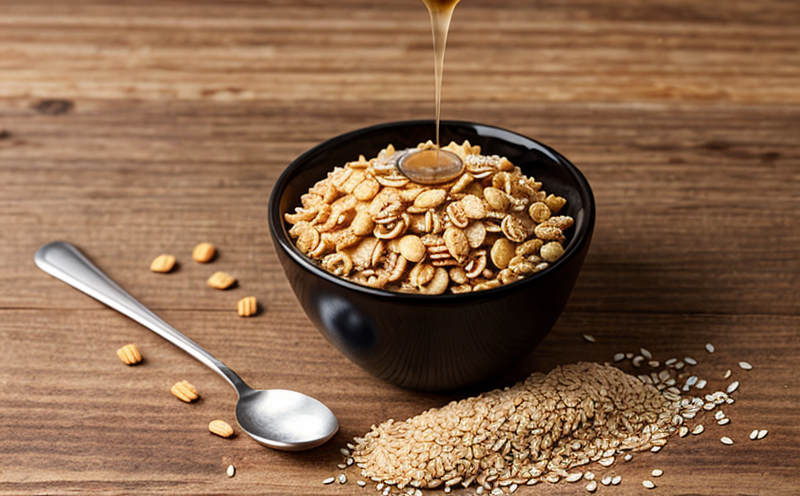Caffeine Content by HPLC UV Test
The High Performance Liquid Chromatography (HPLC) with Ultraviolet Detection (UV-Detector) is a powerful analytical technique used for the quantitative analysis of caffeine in various cereal and grain samples. This service ensures accurate, reliable, and reproducible results that are critical for quality assurance, compliance verification, and research purposes.
The HPLC-UV method works by separating components within a sample based on their interactions with a mobile phase and stationary phase. For the analysis of caffeine, an appropriate mobile phase is chosen to ensure efficient separation from other compounds in cereal grains. The stationary phase selected must be compatible with the nature of the matrix present in cereals.
The standard operating procedure for this service involves several steps:
- Sample Preparation: Samples are prepared according to international standards (e.g., ISO 6873, ASTM E1452). This includes extraction of caffeine from the sample matrix using solvents like water or ethanol.
- Instrumentation Setup: The HPLC system is calibrated with a suitable mobile phase and column. The UV detector is set to monitor specific wavelengths that are characteristic of caffeine absorption.
- Injection and Separation: A small volume of the prepared solution is injected into the HPLC column. The separation process allows for the identification of caffeine as distinct peaks on the chromatogram.
- Data Analysis: Chromatograms are analyzed to determine peak areas corresponding to caffeine. Calibration curves are used to quantify the amount of caffeine present in the sample.
The acceptance criteria for this service ensure that results must meet specific limits set forth by relevant international standards, such as ISO 15927-3 for cereals and grains. Compliance with these standards is crucial to maintain product quality and market access.
| Sample Matrix | Acceptance Limits (mg/kg) |
|---|---|
| Corn | <20 mg/kg |
| Rice | <15 mg/kg |
| Wheat | <30 mg/kg |
This service is essential for industries dealing with cereals and grains, particularly those concerned about the presence of caffeine. It helps in maintaining product integrity, ensuring compliance with regulations, and supporting research endeavors.
Benefits
- Precision: HPLC-UV provides precise quantification of caffeine levels, which is critical for quality control in food and feed production.
- Rapid Results: The technique allows for quick turnaround times, enabling timely decision-making processes in the industry.
- Compliance: Ensures that products comply with regulatory standards related to caffeine content.
- Safety Assurance: Helps identify potential safety risks associated with excessive caffeine levels in food and feed products.
The ability to reliably measure caffeine content ensures consistent product quality, which is essential for maintaining a good reputation among consumers. This service supports the broader goal of ensuring that food and feed meet the highest standards of safety and quality.
Quality and Reliability Assurance
The laboratory adheres to strict quality control measures, including regular calibration of instruments and validation of methods. These practices ensure that every result is accurate and traceable.
We utilize advanced equipment such as Ledion HPLC 3000 for efficient analysis, alongside Agilent ZORBAX Eclipse XDB-C18 columns which offer excellent separation efficiency. Our analysts are trained in the latest techniques and follow ISO/IEC 17025 accredited procedures.
The reliability of this service is further enhanced by our commitment to continuous improvement, ensuring that we stay at the forefront of analytical technology.
Use Cases and Application Examples
- Quality Control: Monitoring caffeine levels in cereals and grains to ensure consistency across batches.
- Compliance: Verifying that products meet regulatory standards for caffeine content.
- Research: Investigating the effects of varying caffeine concentrations on different cereal varieties.
| Use Case | Application Example |
|---|---|
| Quality Control | Detecting deviations from expected caffeine levels in processed cereals. |
| Compliance | Ensuring that exported grain products comply with international caffeine limits. |
| Research | Evaluating the impact of different extraction methods on caffeine recovery rates. |
The HPLC-UV test is a cornerstone for ensuring product quality and compliance, making it indispensable in the food and feed testing sector.





